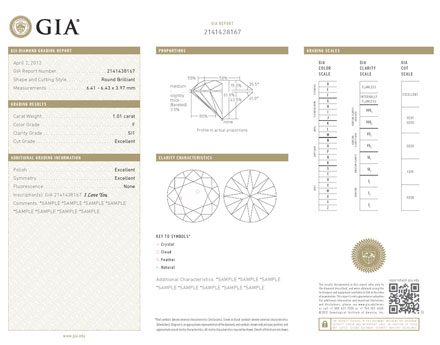Quality and Trust
AK Motiwala provides jewellery with (18/22/24) Carat Gold.
Diamonds and stones are certified and quality assurance is provided by renowned certifiers such as IGI / GIA.
In selecting a diamond, the rarity, value and beauty is determined by the four factors mentioned above, called the 4C’s: Carat Weight , Color , Clarity , and Cut (proportions & finish). Today, many consumers are aware of the 4C’s, however, understanding how they determine value is important to discover what appeals to you in selecting a diamond, and getting the most for your money.
Here are some tips in helping you choose your diamond –
Carat
The weight or size of a diamond is measured in carats (ct.).
One carat weighs 1/5 of a gram and is divided into 100 points, so a diamond weighing 1.07 ct. is referred to as “one carat and seven points.”
For example,
- 75 carat = 75 points
- 1/2 carat = 50 points
- 1/4 carat = 25 points
It is important to note that diamonds of the same weight don’t necessarily have the same size appearance. Those cut too shallow or deep may look small for their weight, or suffer in brilliance. When diamonds are mined, large gems are discovered much less frequently than small ones, which make large diamonds much more valuable.
Colour
Most diamonds of gem quality used in jewelery vary in shade from completely colorless down to a visible yellow or brown tint.
To determine the correct color, all submitted diamonds are compared to an internationally accepted master set of stones, the colors of which range from D, or colorless (the most sought after) to Z, the most yellow/brown – aside from “fancy” yellow or brown. The rarest and most expensive are diamonds in the colorless range graded D,E and F on a scale that descends to Z. Diamonds with more color than Z, or in other shades such as orange, pink, blue, etc. are classified as “Fancy Colored Diamonds”.
The more white the diamond the more flawless are the diamonds.
Clarity
Since diamonds form under extreme heat and pressure, internal and external characteristics are common. These characteristics help gemologists separate natural diamonds from synthetics and simulants, and identify individual stones.
There are two types of clarity characteristics: inclusions and blemishes. In order to grade the clarity of a diamond, it is necessary to observe the number and nature of external and internal characteristics of the stone, as well as their size and position. The difference is based on their locations: inclusions are enclosed within a diamond, while blemishes are external characteristics.
Cut
While nature determined the color and clarity of a natural diamond, man is responsible for the cut quality which brings it to life. The planning, proportions, cutting precision and details of finish determine how brilliant, dispersive and scintillating the diamond will be.
Elements of diamond beauty can be described as brilliance (all light returning to the eye), dispersion or ‘fire’ (seen as white light is broken into spectral colors), contrast patterns (contrasting light and dark areas created by the viewer’s reflection) and scintillation or ‘sparkle’ (seen as the diamond, the light source or the observer move). These qualities combine to create the life of the diamond.
The most popular of all cuts is the Round Brilliant cut.

